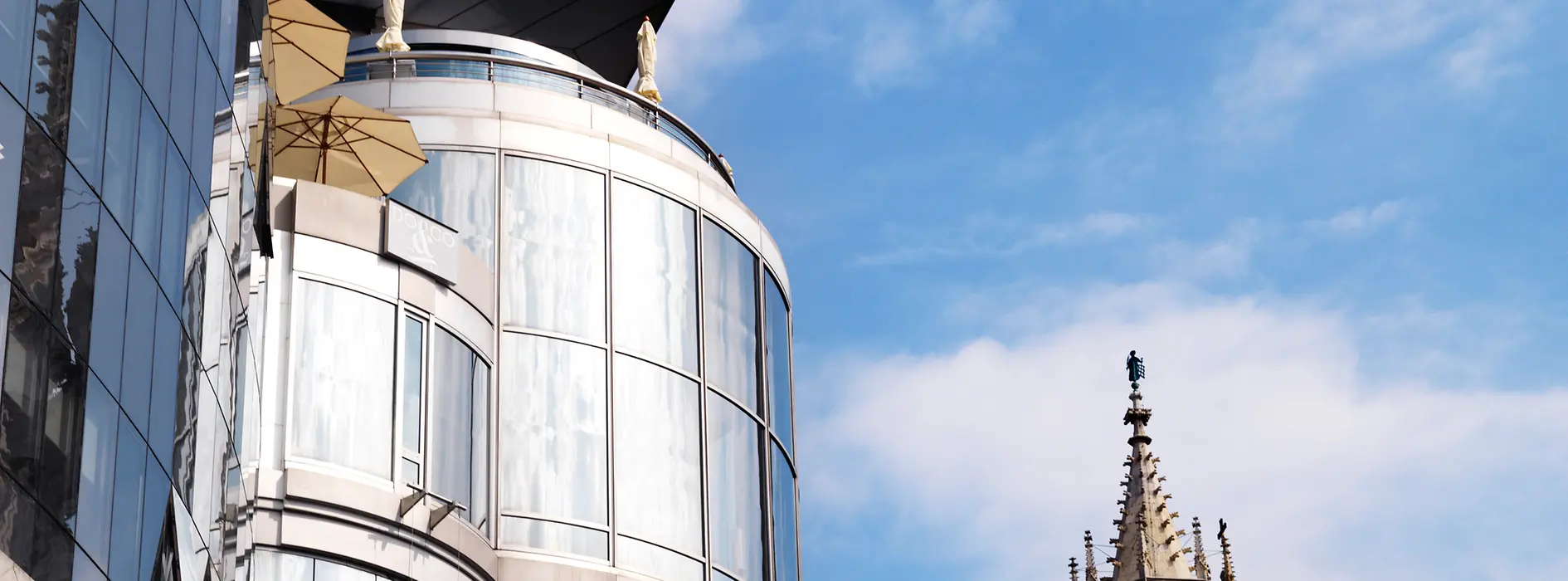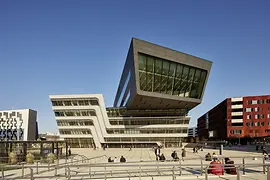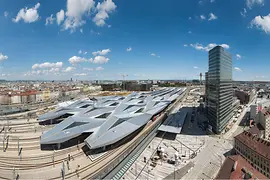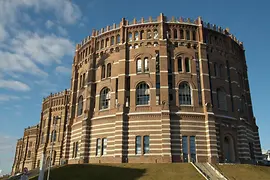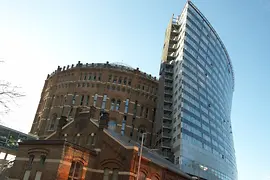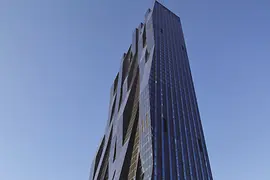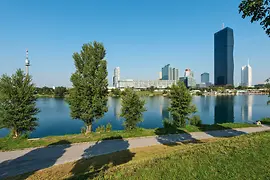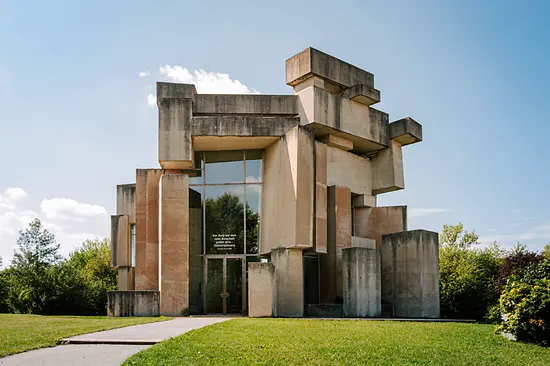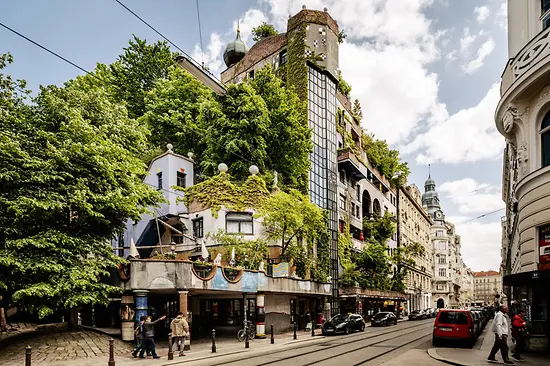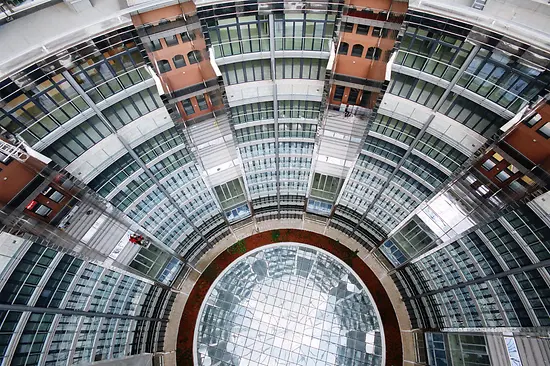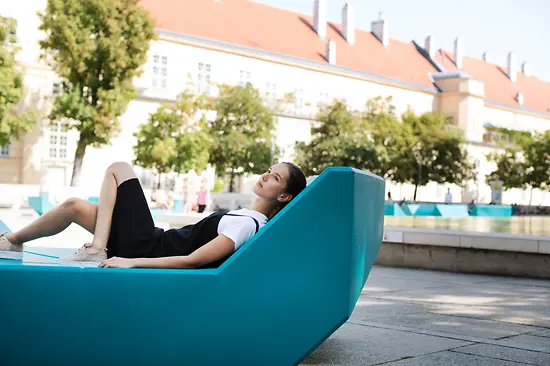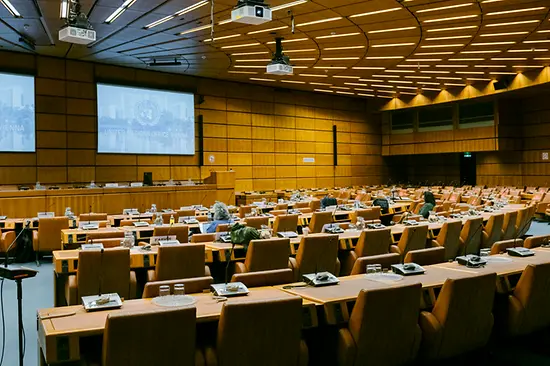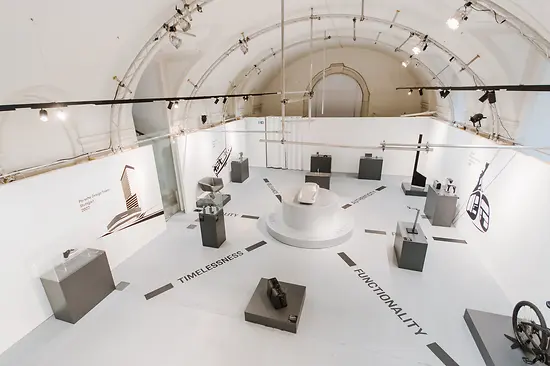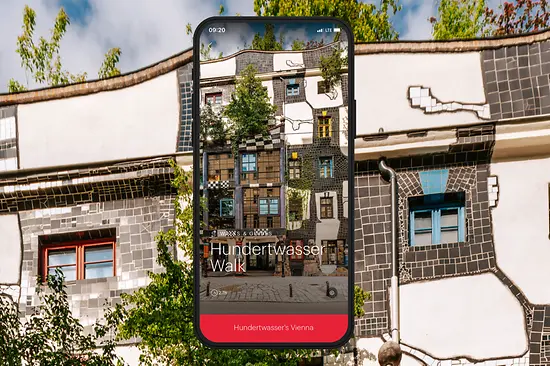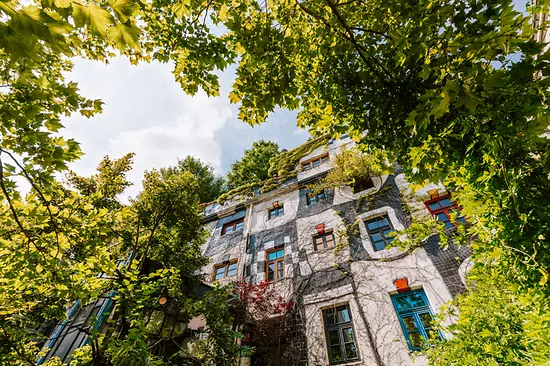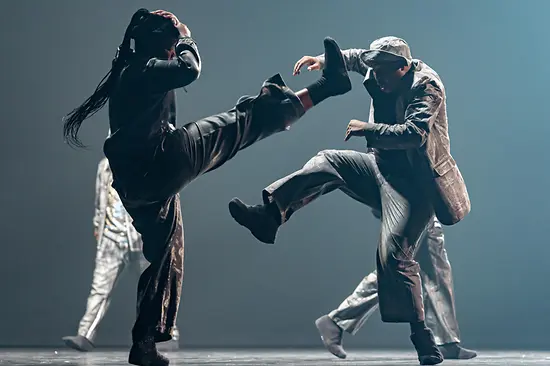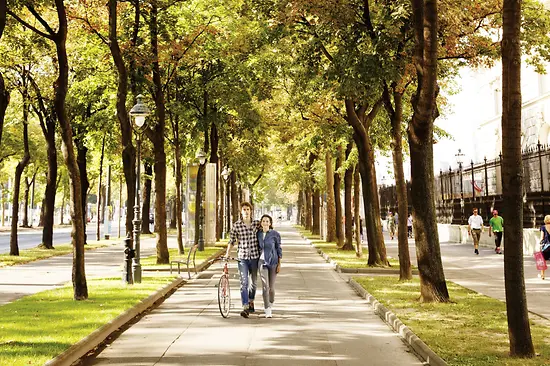Modern architecture
In the 1960s, the visionary designs of architects and artists caused great excitement and were known as the "Austrian Phenomenon". However, most of the revolutionary ideas of Hans Hollein and Coop Himmelb(l)au remained just projects and installations. Implementation was limited to businesses or pubs, such as Hollein's flagship store "Retti" on Kohlmarkt. Hollein, inspired by the moon landing, implemented his vision of a space capsule on an area of just 14 square meters.
In the 1980s, new housing developments and residential buildings were built - often in the post-modern style. In the middle of the 1980s, Vienna had a true architecture scandal: Hans Hollein's design for a modern, glass building across from the time-honored St. Stephen's Cathedral caused a furor. The Haas House was built nonetheless (and opened in 1990), and contemporary architecture in Vienna thus drew increased attention. Another contributing factor this was a roof extension by Coop Himmelb(l)au, completed in 1988 in the first district (Falkestraße) and known about beyond the borders of Austria.
Friedrich Hundertwasser also generated excitement; he created his best-known buildings in Vienna in the 1980s: the Hundertwasser House, Vienna's most bizarre apartment building, and the Kunst Haus Wien as well as the Spittelau garbage incinerator facility. For all of his buildings, Hundertwasser demanded creative freedom and harmony with nature. Sooner laughed at by architects, his colorful designs are very popular with the Viennese and tourists alike.
The construction of new apartments has enjoyed a renewed boom since the 1990s. Numerous architects are implementing innovative ideas: Casket Factory, Wienerberg-City with the Twin Towers by Massimiliano Fuksas, the North Train Station municipal development area, Kabelwerk, Zaha Hadid's residential building near the Spittelau city rail arches, and the Gasometer according to designs by Jean Nouvel, Coop Himmelb(l)au, Manfred Wehdorn, and Wilhelm Holzbauer ignited an international furor.
The MuseumsQuartier will become one of the largest architectural projects of the decade at the beginning of the 21st century. And the Danube City has already been the largest municipal development project in Vienna since 1996. The skyline on the other side of the Danube is growing constantly. Numerous towers of more than 100 meters in height have been built there in recent years. The DC Tower 1 by star architect Dominique Perrault became the tallest building in Austria at the end of 2013, at 220 meters. In May 2014, the skyscraper was voted into second place in the renowned architecture prize "Emporis Skycraper Award”.
Other architectural hotspots of the capital city are the landing stage of the Twin City Liner on the Danube Canal (by Fasch & Fuchs) and the luxury hotel built by Jean Nouvel diagonally opposite. The WU Campus, which opened in 2013 with structures by Zaha Hadid, BUSarchitektur and Sir Peter Cook, is the new center of student life at the Prater. And in the lakeside district of Aspern, on the edge of Vienna, homes and offices for 40,000 people are currently being constructed on a site of 2.4 million square meters. The newly built main station on the site of the former Südbahnhof train station and the adjacent Sonnwendviertel district are extremely exciting in an architectural sense.
Links with more information:
